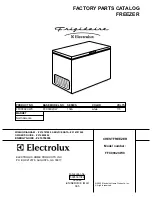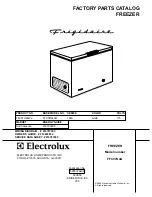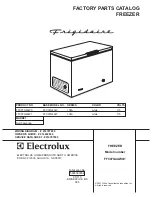
GB
31
Control panel
The thermostatic control on the control panel regulates the
temperature of the freezer compartment.
“Cold” setting - Cold. “Mid” setting - Colder, this is the setting
that is normally used. “Colder” setting - Coldest.
- The temperature will be affected by:
- Room temperature
- How often the door is opened
- How much food is stored
- Position of the appliance
All these factors have to be considered to determine
the correct temperature control setting, and some
experimentation may be necessary. Do not allow children to
tamper with the controls or play with the product.
lmportant!
- We normally advise that you select the
”Mid” setting. If you want the temperature to be higher or
lower please turn the knob to a warmer or colder setting
accordingly.
When you turn the knob to a lower setting, this can improve
the energy efficiency. Otherwise, a higher setting will lead to
more energy consumption.
lmportant!
High ambient temperatures (e.g. on hot summer
days) and a cold setting on the temperature regulator
(position ”Colder”) may cause the compressor to run
continuously!
Reason:
when the ambient temperature is high, the
compressor has to run continuously to maintain a low
temperature in the appliance.
The freezer compartment
The symbol means that your freezer will store
frozen food at -18°C (-0.4F) or colder, allowing for long-term
frozen-food storage and freezing of fresh food. The freezer
temperature is controlled automatically by the thermostat
situated in the control panel. Due to different installations,
methods of use and weather conditions, adjustments to the
temperature settings may be required.
These are best assessed against a temperature reading
from a thermometer buried in the frozen food. The reading
must be taken quickly as the thermometer temperature will
rise rapidly after removal.
Freezing fresh food
Place fresh food in the top freezer drawer. Food may need
rearranging to allow this. During the freezing process the
temperature of fresh food should be reduced quickly so that
ice crystals are kept as small as possible to avoid damaging
the texture of food. lf freezing takes place slowly, large ice
crystals form and these will affect the quality of food once it
has defrosted. Existing frozen food should be rearranged to
leave space in the top two drawers for freezing. The packets
to be frozen should be placed in the drawer to maximize
contact with the drawer surface, and spaced apart to allow
cold air to circulate between them. They should not touch
existing packets. lf there is enough room, transfer the food
you have frozen to the baskets or drawers to allow you to
freeze a further load in the top drawer. Exceptionally large
items can be stored by removing the drawer. Frozen food
should not be refrozen once it has thawed out. Do not
remove items from the freezer if your hands are damp or
wet, as this could cause skin abrasions or ”frost/freezer
burns”. For safety reasons, the freezer drawers are fitted
with stops but are readily removed by pulling them forward
to the stop, then lifting the front and pulling all the way out.
Refit by reversing this procedure.
Frozen food storage
Pre-packed commercially frozen food should be stored in
accordance with the manufacturer’s instructions for a 4-star
frozen food compartment and should be put in the freezer
as soon as possible after purchase. Your freezer enables
long-term storage, which generally means up to 3 months,
but the length of the time can vary and it is important
to follow the recommended times shown on packets of
commercially frozen food. Do not place sealed containers
or carbonated liquids such as fizzy drinks into the freezer
as this pressurizes the container, which may cause it to
explode and damage the freezer. lce cubes and ice lollies
should not be consumed immediately after removal from the
freezer as this may result in low-temperature skin abrasions.










































